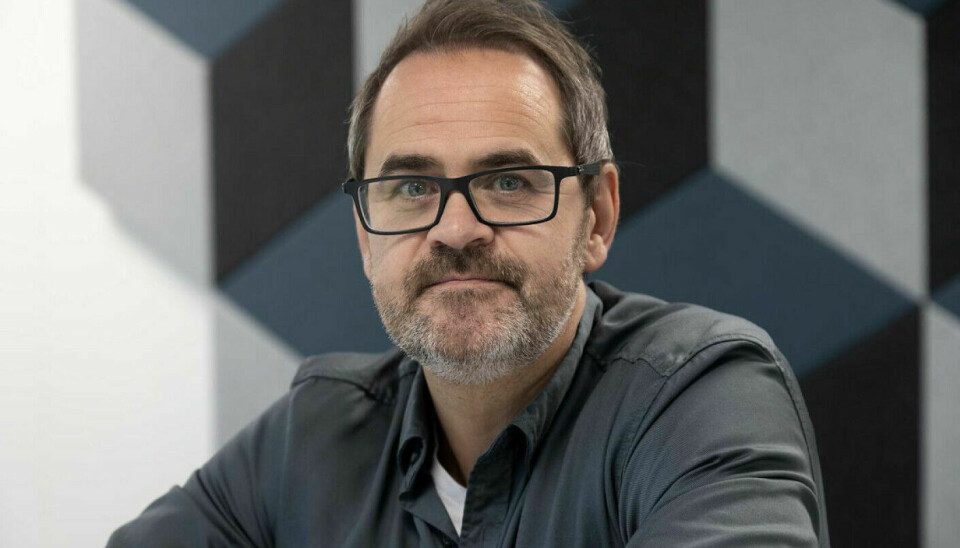
Does it help to ask people if they are having suicidal thoughts?
For the first time in the world, an awareness campaign about suicide is being directed at the population of an entire country. It's happening here in Norway.
Every year, around 650 people in Norway take their own lives.
Can a large, public campaign help reduce the number of suicides in a country?
A main message in the Norwegian campaign is: Ask about suicidal thoughts – it can save lives.
The goal is for more people to dare to ask someone they are worried about – a family member, a friend, a colleague, or an acquaintance – if they are having thoughts of suicide.
The campaign information is being spread through multiple channels, including social media, in the workplace, and in cinemas.
More than two-thirds of those who take their own lives are men.
“That's why men, especially, are the target group for this campaign,” Lars Mehlum sats. He is the director of Norway’s National Centre for Suicide Research and Prevention (NSSF).
Norway is breaking ground
Norway has never before investigated the effect of a public information campaign about suicide. This is also a new approach worldwide.
“We’ve been very aware that we have to take one step at a time. This way, we avoid making mistakes and creating problems rather than solving them,” says Mehlum.

The centre he heads has primary responsibility for coordinating and evaluating the campaign.
Three myths
Researchers carried out several surveys before designing the campaign message.
They queried people on their attitudes towards talking about suicidal thoughts and asked participants to respond to three statements, which are false myths:
- It is best not to talk to people about suicidal thoughts.
- Asking people about suicidal thoughts puts individuals at greater risk for suicide.
- Suicide cannot be prevented. If someone has decided to take their own life, they are going to carry it out sooner or later.
“The survey showed that people who strongly believe in these myths also have a less positive attitude towards helping another person who is struggling with suicidal thoughts,” Mehlum says.
Attitude towards transparency has changed
Most viewed
No content
Mehlum notes that it has not always been as easy to talk openly about suicide and suicidal thoughts as it is now.
“If you had asked me 20 years ago, I would have said no to a campaign like this. Back then, suicide was more of a taboo topic. We might have risked pushing information about suicide onto people who didn’t want it or couldn’t particularly benefit from it," he says.
Today things are different.
Mehlum thinks virtually everyone today has some kind of relationship with the topic of suicide.
“In part because the media writes more about it. This creates new opportunities to reach people who are not particularly inclined to seek help even if they need it,” he says. “And another factor is that a lot of men have a much higher threshold for seeking help than women do."
May change attitudes towards seeking help
Several countries, such as Australia, have attempted suicide awareness campaigns.
But none have done this on the same scale as Norway is doing now.
International research shows that there is little doubt that such campaigns can change attitudes towards seeking help.
But we know less about whether it actually matters in terms of people seeking help and whether it can save lives. That is why we need more research on this, Mehlum says.
We not only need to find out how to bring about a change in attitude, but also what kind of information is effective as a preventive measure.
Starting to get results
The results from the research on the campaign are now starting to come in. Mehlum is cautious about giving details so early, but so far, it seems that the way the campaign is designed matters, he says.
“The campaign messages in the Østfold region reached further out into the population than in Central Norway. We’re now trying to understand this by looking at the material used and the message itself," he says.
Each region can influence how they set up the campaign.
The researchers are also looking at which media have been used to spread the campaign message. In Østfold, social media has been used the most. Central Norway has also used the cinema screen to some extent.
Aiming to reach men through the workplace
In Southern Norway, where the campaign is taking place right now, they have specifically targeted the workplace.
“This hasn’t been done before,” Torstein Garcia de Presno says.
He works with suicide prevention at RVTS Sør, a resource centre for psychological traumas.
“We’re now developing a suicide prevention measure that a company can use for its employees. It consists of five films with additional tasks,” he says.

He believes that using the workplace could work better for reaching men and that colleagues could help each other.
“This campaign information addresses the fact that as many as one in 20 may have suicidal thoughts during a year. This concerns all of us. That's why you have to look, listen, and ask – and be a good colleague,” de Presno says.
Therapy has been overemphasised
Until now, a lot of attention has been focused on identifying individuals who have suicidal thoughts and getting them into therapy for treatment, de Presno believes.
But is ‘talking about it’ in therapy really the answer for everyone?
“We don’t seem to be able to quite reach the men this way,” he says.
Most suicide attempts are made by women
De Presno points out that two out of three suicide attempts are made by women.
“Men have markedly less suicidal behaviour than women,” he says.
He asks:
"Could it be that men do a lot of good things that work for a very long time and that the problem isn't these strategies, but that they don't have a plan B? Is it when these strategies no longer work that suicide becomes a strategy?"
When men try to take their own lives, they unfortunately often have a great deal of determination. They choose more lethal methods than women. This could perhaps explain the increased mortality among men, de Presno believes.
Other strategies needed
De Presno points to a population survey from Australia in which men were asked what they do to feel good and what they do to boost their spirits when they feel down.
Staying active, exercising, and taking a 'time out' are high up on the list. So is using humour and doing something to help others.
Talking to someone is also on the list, but much farther down, he says.
de Presno suggests that maybe we need to ask more men what strategies they use, and that this could be a way to help them.
———
Translated by Ingrid P. Nuse
Read the Norwegian version of this article at forskning.no
































